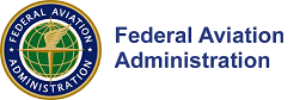The Unmanned Aircraft Systems (UAS) Identification and Tracking Aviation Rulemaking Committee (ARC) chartered by the Federal Aviation Administration (FAA) in June has submitted its report and recommendations (PDF) to the agency on technologies available to identify and track drones in flight and other associated issues.
The ARC’s 74 members represented a diverse array of stakeholders that included the aviation community and industry member organizations, law enforcement agencies and public safety organizations, manufacturers, researchers, and standards entities involved with UAS.
Overall, the ARC provided the FAA with a substantial amount of useful data, including very detailed technology evaluations and a comprehensive list of law enforcement needs and preferences. The ARC’s recommendations and suggestions, which are fully detailed in the report, cover issues related to existing and emerging technologies, law enforcement and security, and implementation of remote identification and tracking. Although some recommendations were not unanimous, the group reached general agreement on most. Highlights of the recommendations include:
- The FAA should consider two methods for remote ID and tracking of drones: direct broadcast (transmitting data in one direction only with no specific destination or recipient) and (2) network publishing (transmitting data to an internet service or group of services). Both methods would send the data to an FAA-approved internet-based database.
- The data collected must include a unique identifier for unmanned aircraft, tracking information, and drone owner and remote pilot identification.
- The FAA should promote fast-tracked development of industry standards while a final remote ID and tracking rule is developed, potentially offering incentives for early adoption and relying on educational initiatives to pave the way to the implementation of the rule.
- The FAA should implement a rule in three stages, with an ultimate goal that all drones manufactured or sold within the United States that comply with the rule must be so labeled. The agency should allow a reasonable grace period to retrofit drones manufactured or sold before the final rule is effective.
- The FAA should coordinate any ID and tracking system with the existing air traffic control system and ensure it does not substantially increase workloads.
- The FAA should exempt drones operating under air traffic control or those operating under the agency’s discretion (public aircraft operations, security or defense operations, or with a waiver).
- The FAA must review privacy considerations, in consultation with privacy experts and other Federal agencies, including developing a secure system that allows for segmented access to the ID and tracking information. Within the system, only persons authorized by the FAA (e.g., law enforcement officials, airspace management officials, etc.) would be able to access personally identifiable information.
While the ARC reached consensus on most issues, there were dissenting opinions, primarily over to which drones the ID and tracking requirements should apply. Many of these dissenting opinions expressed concerns that exempting model aircraft operating under Section 336 of the FAA Modernization and Reform Act of 2012 would undermine the value of an ID and tracking requirement. Other dissenting opinions touched upon issues such as privacy and a lack of detail or consideration for ATC involvement.
The FAA will use the data and recommendations in the ARC report in crafting a proposed rule for public comment.
Source: Press Release

